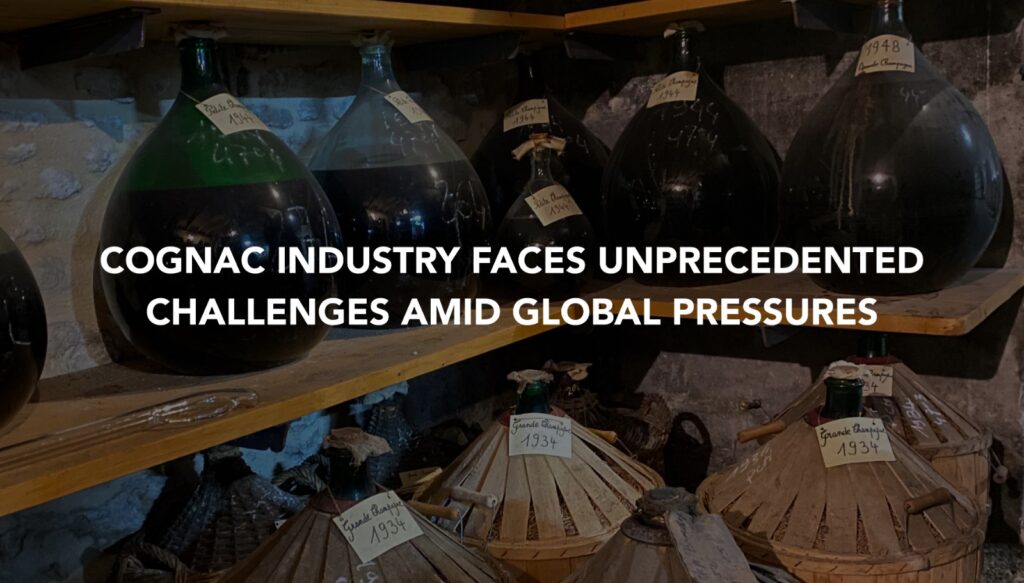
Sanghamitra Banik
winesutra
Founder and CEO,
Winesutra
The prestigious Cognac industry, renowned for producing what many consider the finest brandy in the world, is facing mounting challenges. From trade restrictions imposed by China and the United States to the ever-growing threat of climate change, producers in the Cognac region are being forced to adapt swiftly to safeguard their heritage and economic stability.
Cognac production is meticulously regulated, with only grapes from six designated areas eligible for use in crafting the renowned brandy. The industry is vital to France’s economy, employing approximately 70,000 people directly and indirectly. However, external factors are now threatening its prosperity.

Beyond trade disputes, winemakers are also grappling with the repercussions of climate change. Rising temperatures are affecting the acidity levels of grapes, which are critical to Cognac’s distinct profile. Earlier ripening increases the risk of harvest failures due to frost, hail, or disease. With shifting climate conditions, producers are required to reconsider their grape varietals and cultivation strategies.

Despite the challenges, some industry leaders remain optimistic. The BNIC and local winemakers’ unions have advised producers to cut back on vineyard expansion to reduce costs associated with machinery and pesticides. Yet, a longtime grower refuses to follow this trend, having spent years expanding his vineyards during Cognac’s peak demand. The region has long thrived due to its ability to adapt. Many of its most prominent Cognac houses – such as Hennessy, Martell, Courvoisier, and Rémy Martin – were founded by immigrants and have grown into global empires, controlling 90 percent of the market.
As Cognac producers navigate evolving trade landscapes, emerging markets are set to play a crucial role in the industry’s future. Countries such as India, Africa, and Latin America are expected to ramp up imports in 2025, driven by targeted marketing efforts from French producers. While these regions may not yet rival the dominance of the U.S. or China, they offer valuable opportunities for incremental growth.
At the same time, product innovation is reshaping Cognac’s appeal. From ready-to-drink Cognac-based cocktails to versatile blends designed for modern mixology, brands are adapting to attract younger consumers and broaden their global reach. The global cocktail renaissance shows no signs of slowing, with timeless favorites like the Sidecar and innovative craft creations driving demand for premium Cognac in bars worldwide – a trend poised to persist through 2025.

Despite steep taxation, Cognac has secured its place in India’s premium spirits landscape, standing as a symbol of luxury and craftsmanship. While whisky and rum remain dominant, Cognac continues to captivate connoisseurs and affluent consumers, drawn to its refined heritage and sophistication.



